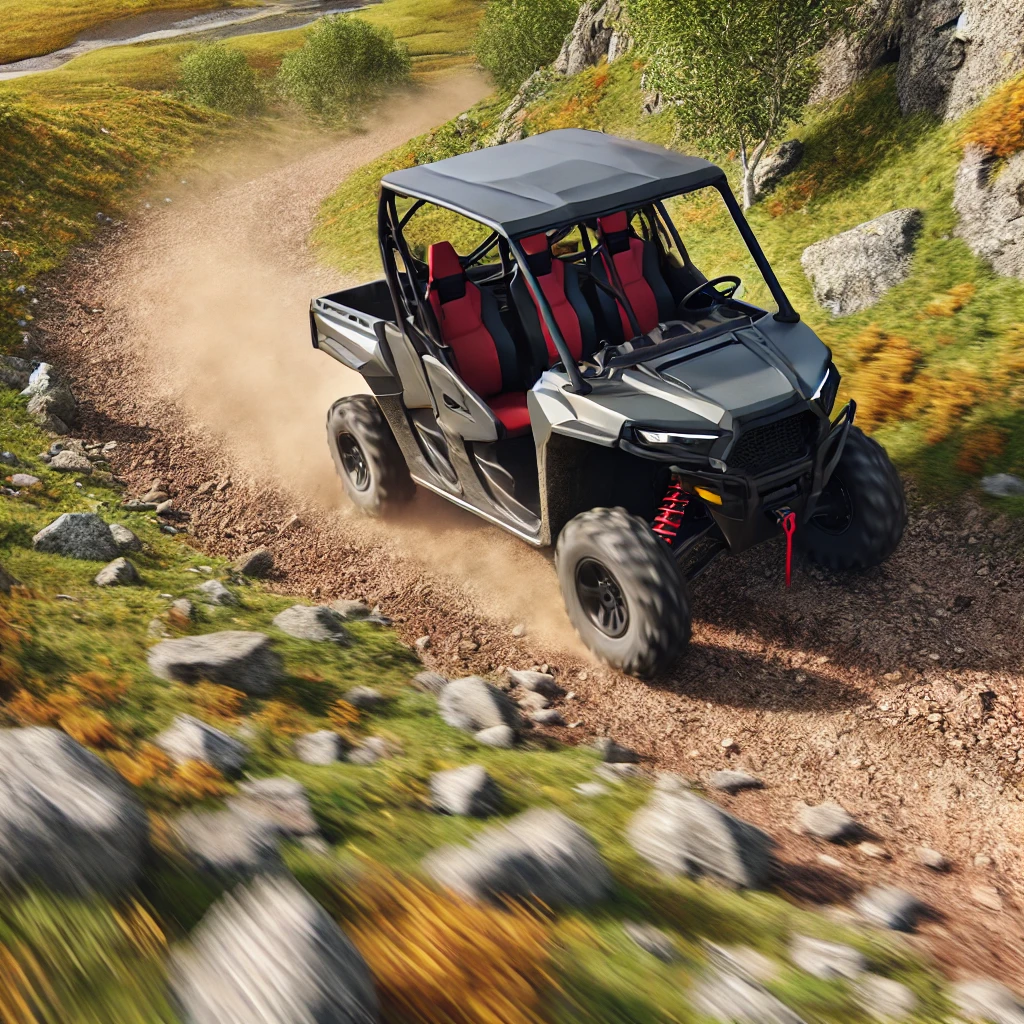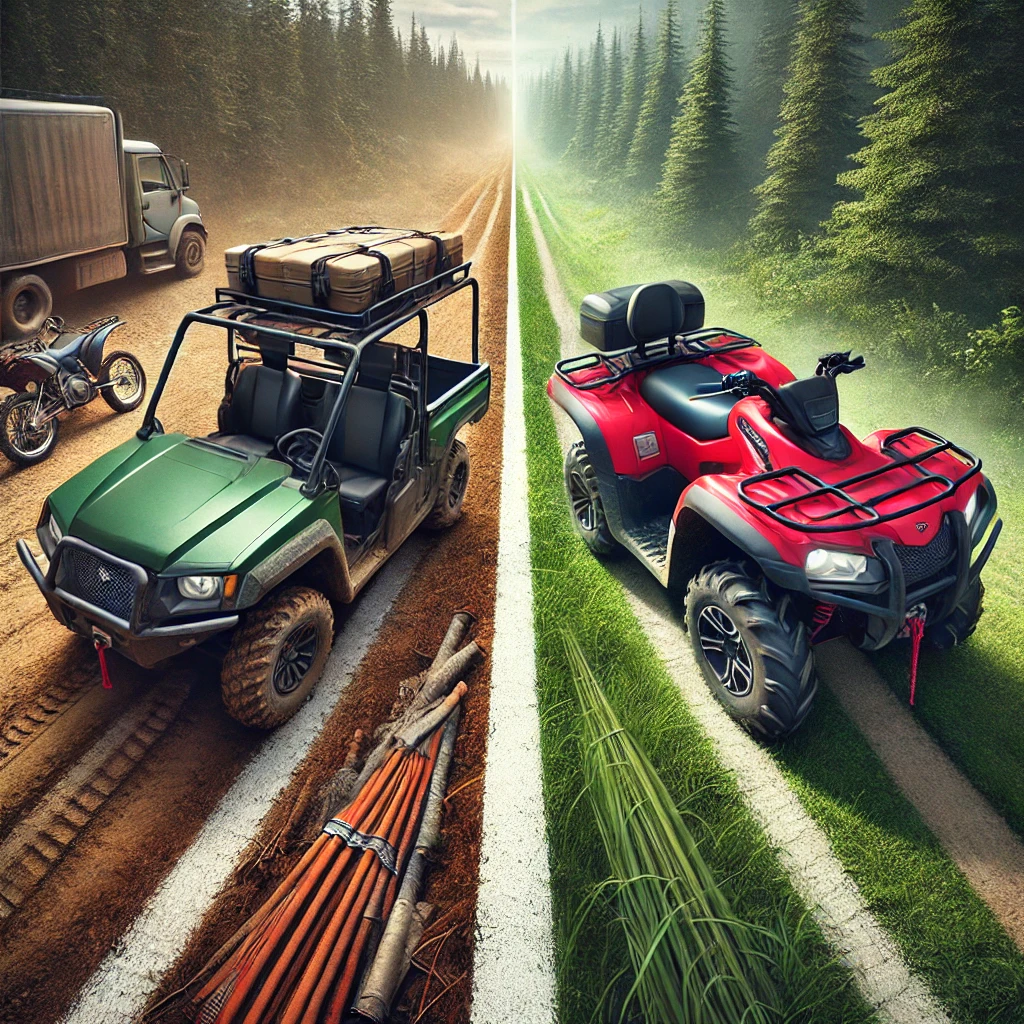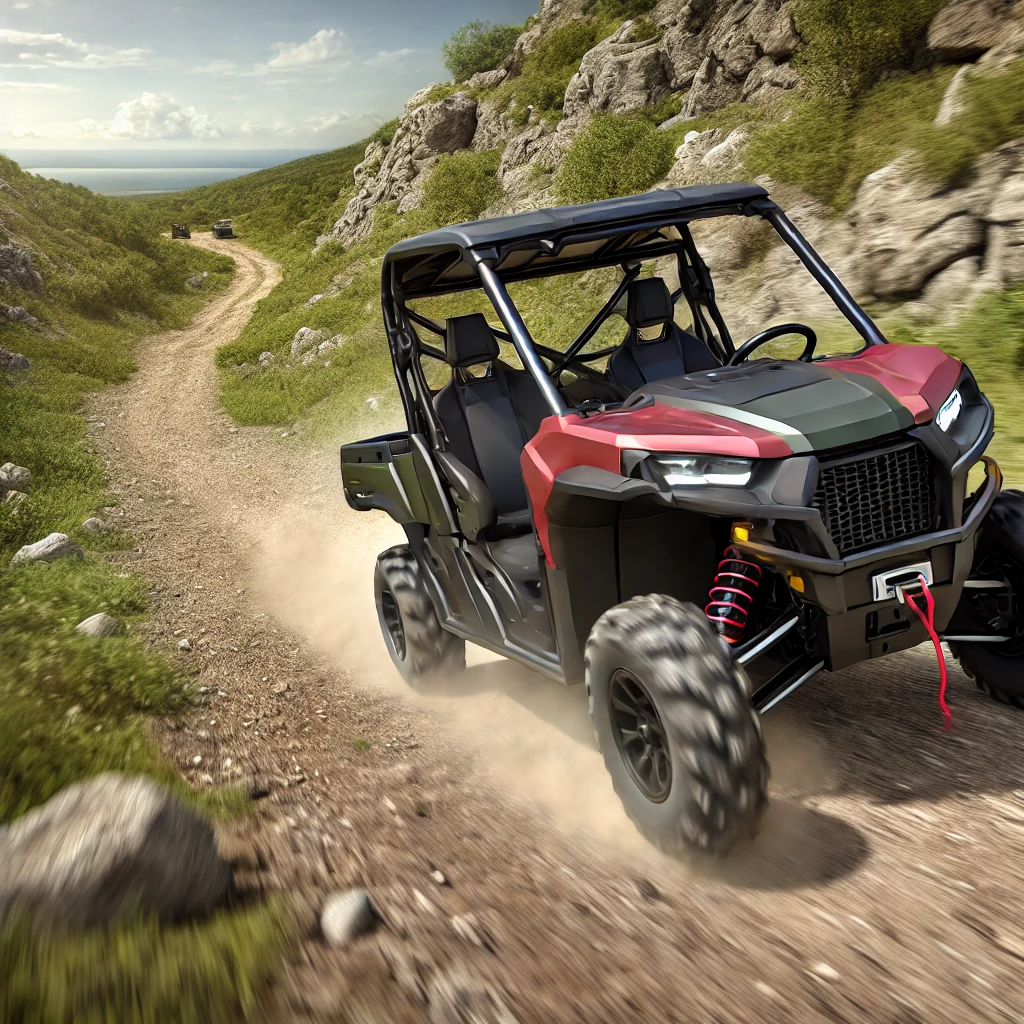When navigating the world of off-road vehicles, UTV is an acronym that frequently comes up. Whether you’re an outdoor enthusiast, a farmer, or someone interested in recreational activities, understanding what UTV stands for and its applications can help you make informed decisions.
This comprehensive guide explores the meaning of UTV, its features, benefits, types, and why it has become a popular choice for various activities.
Introduction to UTV
Utility Terrain Vehicles (UTVs) have revolutionized the way people approach off-road activities, farming, and industrial tasks. Designed for versatility, durability, and performance, UTVs cater to a wide range of needs, making them indispensable tools for both recreational and professional use.
What Does UTV Stand For?
UTV stands for Utility Terrain Vehicle. These vehicles are also commonly referred to as Side-by-Side (SxS) vehicles due to their seating configuration, where the driver and passenger sit side by side. UTVs are built to handle a variety of terrains and tasks, combining the functionality of work vehicles with the performance of recreational off-roaders.
History of UTVs

The concept of utility vehicles dates back to the early 20th century with the introduction of the Marmon Wasp in 1954, one of the first UTVs designed for agricultural use. Over the decades, advancements in engineering and technology have transformed UTVs from simple workhorses into sophisticated machines capable of tackling diverse challenges.
Milestones in UTV Development
- 1954: Introduction of the Marmon Wasp, considered one of the first UTVs.
- 1980s: Rise in popularity for recreational use alongside agricultural applications.
- 2000s: Technological advancements led to improved safety features and performance capabilities.
- 2010s: Expansion of the UTV market with specialized models for different industries and activities.
Types of UTVs
UTVs come in various configurations, each tailored to specific needs and environments. Understanding the different types can help you choose the right vehicle for your intended use.
Sport UTVs
Designed for high-speed performance and agility, Sport UTVs are ideal for racing and recreational trail riding. They often feature powerful engines, enhanced suspension systems, and lightweight frames to maximize speed and maneuverability.
Utility UTVs
Utility UTVs are built for heavy-duty tasks such as towing, hauling, and transporting materials. They come equipped with features like racks, plows, and storage compartments, making them suitable for farming, construction, and landscaping.
Off-Road UTVs
Off-Road UTVs are engineered to handle rugged terrains, including mud, rocks, and steep inclines. They typically have higher ground clearance, robust suspension systems, and all-terrain tires to ensure stability and performance in challenging environments.
Side-by-Side UTVs
Also known as Side-by-Side (SxS) vehicles, these UTVs offer a comfortable seating arrangement for multiple passengers. They are versatile and can be used for both recreational activities and light-duty work, making them popular among families and small businesses.
UTV vs. ATV: Key Differences

While both UTVs (Utility Terrain Vehicles) and ATVs (All-Terrain Vehicles) are designed for off-road use, they have distinct differences that cater to different needs.
| Feature | UTV (Utility Terrain Vehicle) | ATV (All-Terrain Vehicle) |
|---|---|---|
| Seating | Side-by-side seating for multiple passengers | Single rider or tandem seating |
| Capacity | Typically 2-6 passengers | Usually 1-2 passengers |
| Engine Power | More powerful engines for heavy-duty tasks | Less powerful, designed for agility |
| Stability | Larger frame with four wheels for stability | Smaller frame with three or four wheels |
| Usage | Suitable for work, hauling, and recreation | Primarily for individual recreation and agility |
| Cargo Space | Ample cargo space with racks and storage | Limited cargo space |
Benefits of UTVs
Investing in a UTV offers numerous advantages, making them a valuable addition to both recreational and professional settings.
Versatility
UTVs are highly versatile, capable of performing a wide range of tasks from farming and construction to recreational trail riding and racing.
Increased Capacity
With the ability to carry multiple passengers and significant cargo, UTVs enhance productivity and enjoyment for group activities.
Enhanced Stability and Safety
The four-wheel design and higher ground clearance provide better stability and safety, especially on uneven or slippery terrains.
Power and Performance
UTVs are equipped with powerful engines and advanced suspension systems, allowing them to handle demanding tasks and challenging landscapes with ease.
Comfort and Convenience
Modern UTVs offer comfortable seating, ergonomic controls, and various convenience features like storage compartments, making them suitable for long rides and extended use.
Common Uses of UTVs
UTVs are utilized across various industries and activities, showcasing their adaptability and functionality.
Recreational Activities
- Trail Riding: Exploring off-road trails and scenic landscapes.
- Racing: Participating in competitive UTV races and events.
- Adventure Tours: Guided tours through rugged terrains and remote areas.
Agricultural Purposes
- Plowing and Tilling: Assisting in farming tasks by towing plows and other equipment.
- Transporting Supplies: Moving feed, fertilizer, and other agricultural materials.
- Livestock Management: Transporting animals and managing farm operations efficiently.
Industrial Applications
- Construction: Transporting materials, tools, and equipment across construction sites.
- Landscaping: Assisting in landscaping projects by hauling debris and supplies.
- Maintenance: Performing maintenance tasks in large facilities or remote locations.
Safety Features and Considerations
Ensuring safety while operating a UTV is paramount. Modern UTVs come equipped with various safety features to protect drivers and passengers.
Roll-Over Protection Structure (ROPS)
A ROPS is a sturdy framework designed to protect occupants in the event of a roll-over accident, minimizing injury risks.
Seat Belts
Seat belts keep passengers securely in place, preventing them from being ejected during sudden maneuvers or impacts.
Braking Systems
Advanced braking systems, including ABS (Anti-lock Braking System), ensure effective stopping power and vehicle control.
Lighting and Visibility
Proper lighting, including headlights, taillights, and reflectors, enhances visibility during night rides or in low-light conditions.
Protective Gear
Operators should wear appropriate protective gear, such as helmets, gloves, and sturdy footwear, to reduce the risk of injury.
Conclusion
Understanding what UTV stands for—Utility Terrain Vehicle—opens up a world of possibilities for both recreational enthusiasts and professionals alike. UTVs offer unmatched versatility, combining the ruggedness needed for off-road adventures with the functionality required for various work tasks. By choosing the right UTV, maintaining it properly, and staying informed about the latest advancements, you can maximize the benefits and enjoy a safe and rewarding experience.
Whether you’re exploring uncharted trails, managing agricultural tasks, or enhancing industrial operations, a UTV is a valuable asset that adapts to your diverse needs. As technology continues to evolve, UTVs will undoubtedly become even more integral to both leisure and work, driving innovation and efficiency in the automotive landscape.
